Common parasites of dogs
Common parasites of dogs
Heartworm
Introduction
Heartworm is an important parasitic disease of dogs in Hong Kong. The scientific name is Dirofilaria immitis. The adult worms live in the blood vessels of the heart and lungs and can grow up to 30cm in length! In severe cases there can be up to 250 worms present. This disease can be fatal in dogs and treatment is not straightforward. Therefore, dog owners should give simple preventive treatment to stop the disease from occurring.
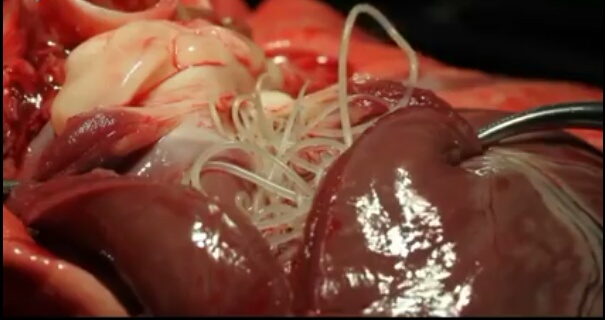
♦Worms inside heart[1]
Life cycle
The adult worms live in the blood vessels of the dog’s heart and lungs. The adult worms produce tiny larvae (called ‘microfilariae’) which travel in the blood stream. If a mosquito bites an infected dog, some of the larvae may pass into the mosquito. If that mosquito subsequently bites another dog, it injects some of the larvae which then grow inside the dog and eventually migrate to the heart and lungs and become adults. The life cycle is then complete.
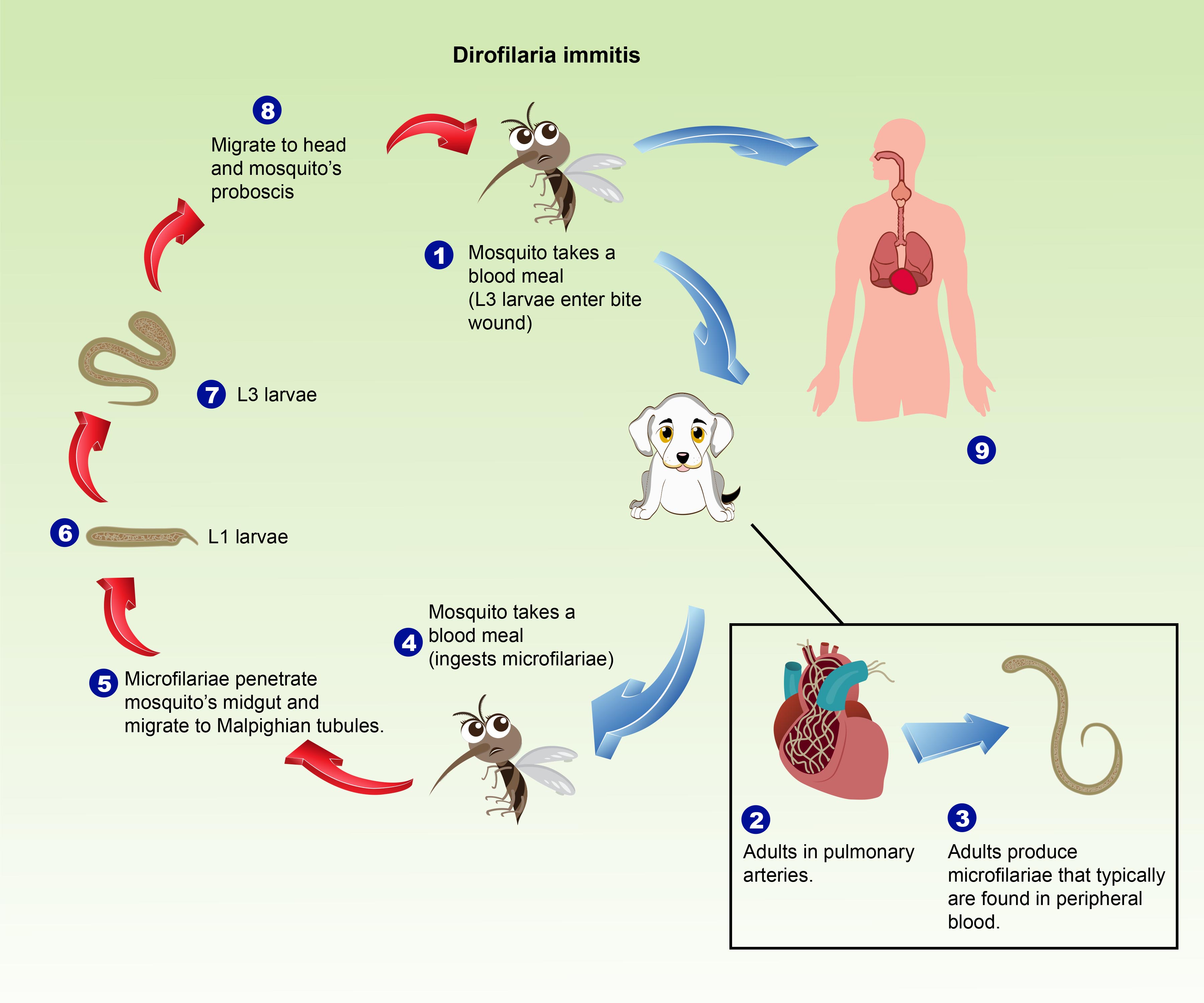
♦Heartworm life cycle
The various stages of the life cycle take time to complete. For example, around 2 weeks are required for the larvae to develop inside the mosquito (depending on temperature) and the larvae develop for around 6 months inside the dog before becoming adults. Adult heartworms can live for up to 7 years!
Signs of heartworm inflection
Many dogs with heartworm infection may not show any outward signs at first. Even so, the worms cause damage to the blood vessels of the heart and lungs and the kidneys may also be affected as a result of the immune response to the worms. Overt signs of infection include lethargy, tiring easily, weight loss, cough, difficulty breathing, fainting, abdominal distention, etc. As such signs may be caused by other diseases apart from heartworm you should always consult a registered veterinary surgeon whenever your dog shows any signs of illness. Your vet will also advise you on what tests and treatments are available. Ultimately, heartworm can lead to death, so it is important to prevent the disease from occurring.
Prevention
Prevention of heartworm is safe and effective and can be as simple as a yearly injection at the vet clinic, a monthly tablet given at home or a monthly topical (‘spot-on’) application. Talk to your vet about which type of preventive treatment is best for your dog. You should start preventing heartworm when your dog is young, and it is best to give the prevention all year round in Hong Kong. Depending on your dog’s history, a heartworm test might be required before starting the preventive treatment. Your vet can also advise you about this. Consult a registered veterinary surgeon before starting (or re-starting) preventive treatment and only use preventive treatments prescribed by them.
Dirofilariasis in humans and other animals
In rare cases, humans can be affected by Dirofilaria worms but as they are not the usual host, the life cycle does not complete. If an infected mosquito bites a human and transfer of larvae occurs, infection may result in nodules under the skin, conjunctiva or internal organs, urticaria (hives), inflammation of the lymphatic system etc. The infection does not transmit from person to person. Taking standard personal protective measures against mosquito bites and preventing the disease in dogs (the natural host) are important steps to reduce the risk of human infection. Cats can also be affected by dirofilariasis but the incidence appears to be very rare compared to dogs in Hong Kong.
Photos credits to:
[1] Author: MUHAMMED RAIHAN PA, https://zh.wikipedia.org/wiki/File:Heartworm2.jpg
Roundworms
Introduction
(NB: this roundworm should not be confused with the protozoan parasite of cats, Toxoplasma)
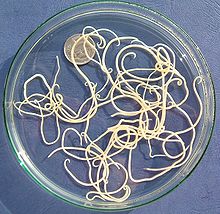
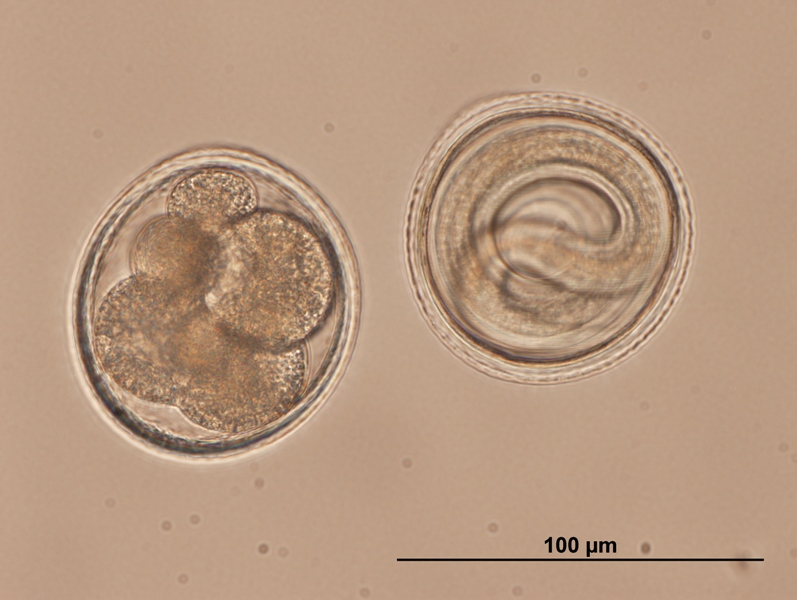
♦Toxocara canis adult worms[2] and egg[3]
Life cycle
The adult worms live in the small intestine of dogs. The worms produce eggs which are passed in the faeces and the eggs then undergo a period of maturation in the environment before they become infective. This takes around 4 weeks at optimal temperatures. When the infective eggs are ingested by another dog they hatch in the small intestine and the released larvae penetrate the intestine and travel in the bloodstream to the lungs via the liver. The larvae develop further in the lungs and are eventually coughed up, swallowed and finally end up back in the small intestine where they develop into adult worms. The full cycle usually only happens when the eggs are ingested by a young dog, less than 3 months old. If an older dog ingests infective eggs the larvae travel to various tissues in the body (liver, lungs, brain, heart and muscle) and their development is arrested. This is important because in pregnant dogs, these dormant larvae become reactivated and pass through the placenta into the foetus. This is the reason why many puppies are infected with roundworms and require frequent deworming in early life.
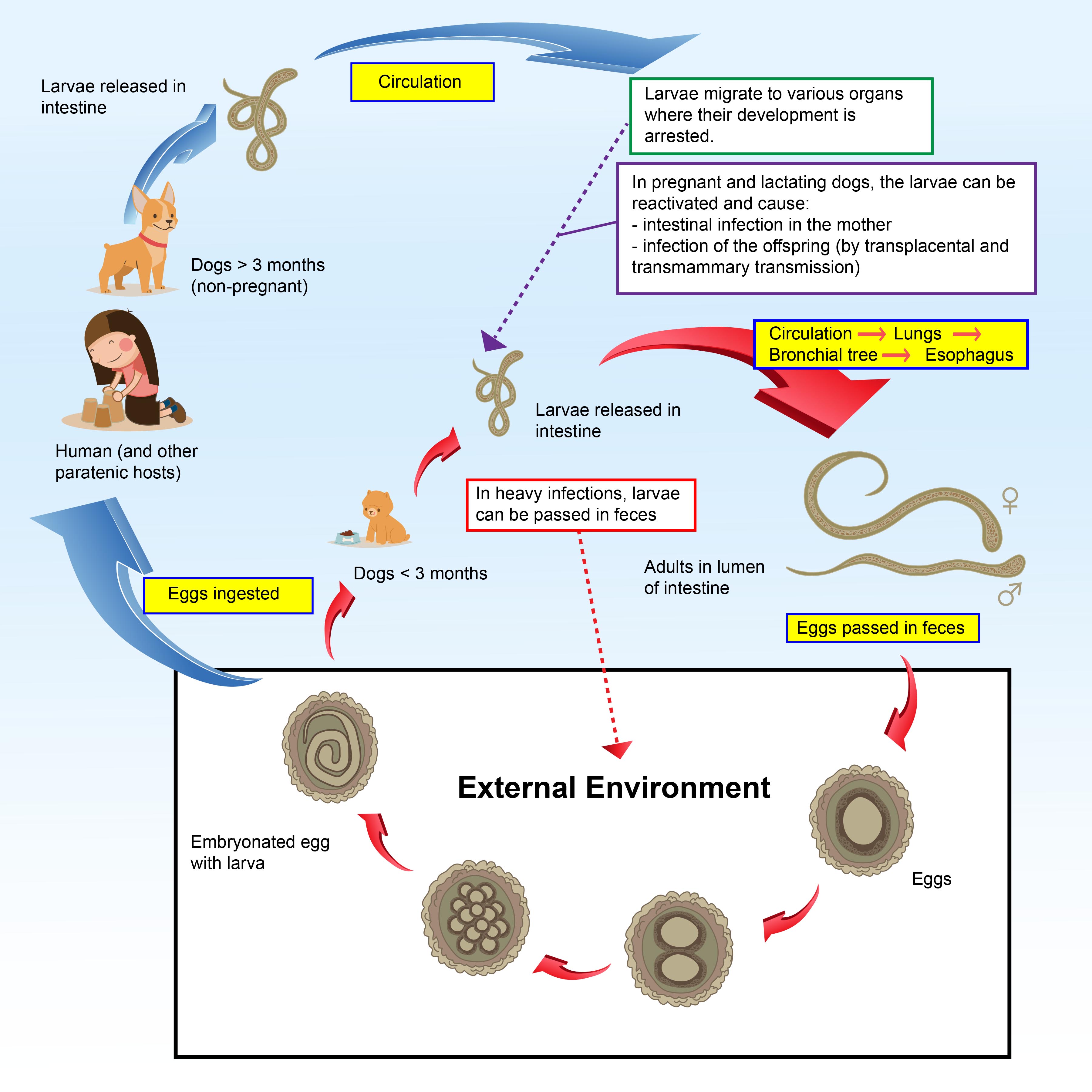
♦Toxocara canis life cycle
_Surrounded_by_Neoplastic_Lymphocytes_1.jpg)
♦Toxocara canis larva[4]
Signs of roundworm infection
Adult worms in the intestine may cause pot-belly, failure to thrive, diarrhoea and sometimes vomiting. Entire worms may sometimes be seen in the faeces or vomitus. Heavy infections may lead to blockage of the gut which can be fatal. In addition to the signs associated with the adult worms, the migrating larvae can cause lung damage and pneumonia in heavy infections (usually in puppies) leading to coughing, rapid breathing and nasal discharge. These signs are not specific to roundworm infection and, as always, you should take your dog to a registered veterinary surgeon for diagnosis and treatment whenever signs of illness develop.
Prevention
Prevention of roundworm infection is safe and effective and should be the aim of every responsible dog owner. Every dog requires some form of preventive treatment for roundworms although the medicine used and frequency with which it is given may vary according to age, lifestyle, and other risk factors. Your vet will tailor an appropriate deworming plan for your dog. In general, puppies require more frequent deworming (e.g. every 2 weeks from 2 to 12 weeks of age). Adult dogs should generally be dewormed every 6 months.
Toxocariasis in humans
Toxocara canis is an important zoonotic disease although the reported incidence of clinical cases in humans is small. It is particularly important in children who may contact and ingest the eggs via household pets or in public parks where there is contamination by dog faeces. When the infective eggs are ingested by humans the larvae undergo a migration similar to that in dogs and end up in various tissues in the body. The life cycle does not complete in humans and adult worms are not found in the intestine. Most human cases do not show any symptoms but sometimes the larvae cause inflammation of the tissues in which they are deposited and various symptoms can develop – this is known as visceral larva migrans. Rarely, the larvae travel to the eye and impair vision resulting in a condition called ocular larva migrans. Hence, the preventive measures outlined above are important not only for the health of dogs, but also to protect public health. Preventing contamination of public areas by dog faeces is also very important – clean up after your dog! Other measures to prevent human infection include washing hands with soap and water after playing with your pets or other animals, after outdoor activities, and before handling food. Teach children the importance of washing hands to prevent infection.
Photos credits to:
[2] Author: Flukeman, https://commons.wikimedia.org/wiki/File:T._canis_adult_worms_wiki.JPG
[3] Author: Flukeman, https://commons.wikimedia.org/wiki/File:Toxocara_embryonated_eggs.jpg
[4] Author: Lance Wheeler,
https://commons.wikimedia.org/wiki/File:Microfilaria_of_Dirofilaria_immitis_(Heartworms)_Surrounded_by_Neoplastic_Lymphocytes_1.jpg
Tapeworms
Introduction
Tapeworms are segmented worms which attach to the small intestine and there are several species which can infect dogs. The most common is Dipylidium caninum.
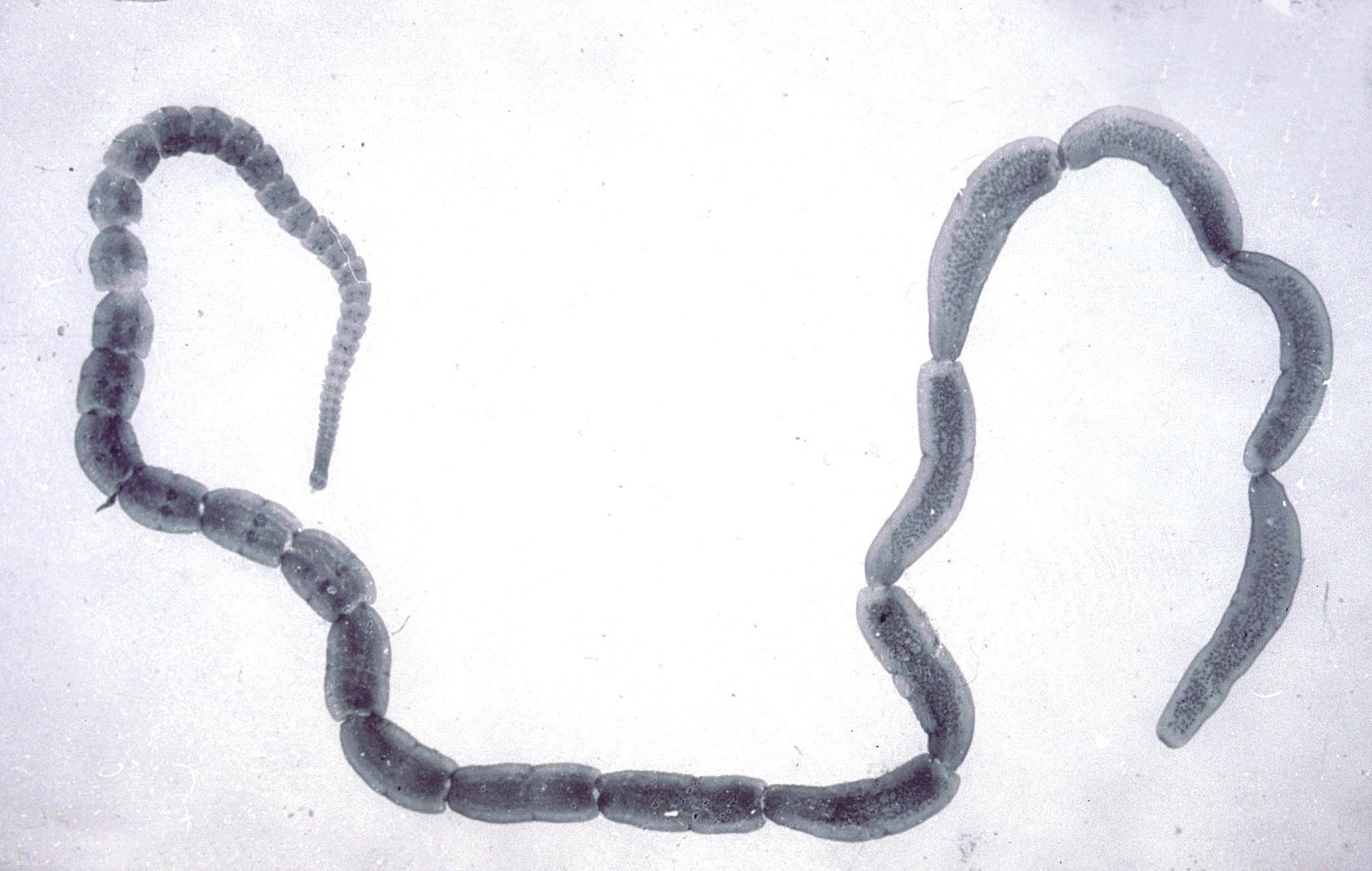
♦Adult Dipylidium caninum tapeworm[5]
Life cycle
Adult worms of D. caninum shed segments full of eggs. The eggs are ingested by lice on the dog or flea larvae in the environment (intermediate hosts). The eggs develop into an infective form (called cysticercoids) in the intermediate host. When the intermediate host (louse or flea) is ingested by a dog (e.g. during licking or grooming) the cysticercoid develops into an adult worm in the intestine and the life cycle is complete.
♦Dipylidium caninum tapeworm life cycle
Prevention
Tapeworms rarely cause significant disease in dogs but it is still good practice to regularly use a dewormer active against tapeworms. Flea and lice control is also important in the prevention of D. caninum since they act as intermediate hosts. Check with your vet about the deworming programme for your dog.
Public Health significance of tapeworms
It is possible for humans to become infected with D. caninum but it is not very common and it is treatable. Good flea control, basic hygiene and regular deworming of dogs should prevent the disease in humans. Other species of dog tapeworms are more important from a public health viewpoint but are generally not found in Hong Kong. For example, the tapeworm Echinococcus granulosus is of great importance in some parts of the world since the intermediate stage can cause serious disease (hydatid cysts) in humans. In rural agricultural parts of the world, the intermediate stage of some species of dog tapeworms can affect livestock and measures must be put in place to prevent infections.
Photos credits to:
[5] Author: Alan R Walker, https://commons.wikimedia.org/wiki/File:Dipylidium-adult.jpg
Fleas
Introduction
Fleas are dark brown wingless insects and very common parasites of mammals and birds worldwide. Although they can potentially transmit diseases their main importance is that they cause flea bite allergies and hence significant discomfort to the host animal. Ctenocephalides felis is the scientific name of the flea most commonly found on both cats and dogs.

♦Fleas[6]
Life cycle
Adult fleas are obligate parasites and live by sucking the blood of their host. The adults lay eggs which drop to the ground. Within 2-14 days, depending on the temperature, the eggs hatch into larvae which feed on debris and the faeces of adult fleas. After a period of further development, the larvae spin a cocoon to form a pupa from which the adult eventually emerges. It is important to recognise that much of the life cycle actually takes place away from the host. Thus, treatment of the adult fleas on the host animal alone may not be sufficient to eradicate infestations in the environment.
♦General flea life cycle
Signs of flea infestation
Fleas are visible to the naked eye, so they can sometimes be seen on the animal in heavy infestations. However, failure to find adult fleas on the host does not necessarily rule them out since they have a great jumping ability and leap on and off the host. Flea faeces may be seen in the fur of the host – these appear as tiny black/brown specks which produce a reddish stain when placed on a moist tissue. Flea bites cause itchiness for the host animal, so scratching or excessive licking is the sign which most owners notice first. After repeated bites, the animal may develop an allergic reaction to the flea saliva released into the skin during feeding. The skin becomes red with intense itching and fur may begin to fall out, especially on the back of the dog. Many other skin conditions can cause redness and itchy skin so you should take your dog to a vet for a diagnosis and treatment.
Prevention
Fleas and humans
The type of fleas commonly found on dogs and cats generally do not live on humans but in heavy infestations, or if the preferred host is not available, they may bite humans as well. Typically, flea bites cause itchy red spots, especially on the legs. Fleas can also transmit some diseases, such as the bacteria which causes plague, but that would be very uncommon these days. Preventive measures for fleas on your pet and in the environment should be effective at preventing bites on humans from dog and cat fleas.
Photos credits to:
[6] Author: Katja ZSM, https://commons.wikimedia.org/wiki/File:Pulex_irritans_female_ZSM.jpg
Ticks
Tick fever and tick control
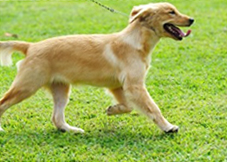
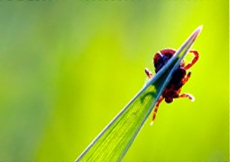
Where are ticks found?
Ticks are often found in parks and grass areas. Ticks usually crawl to the top of tall grass and then jump onto the body of dogs.
How is tick fever transmitted to dogs?
Tick fever is a common disease in dogs in Hong Kong. The three common types of blood parasites that cause the disease here include Babasia canis, Babesia gibsoni and Ehrlichia canis.
Tick fever can be transmitted when a tick that is infected by blood parasites bit a dog. When an infected tick bites a dog, the tick will release the blood parasites into the dog’s bloodstream. These blood parasites then live and breed within the red blood cells of the dog. The dog’s immune system will destroy the infected red blood cells killing the parasites but also killing the red blood cells. This will cause the dog to have anemia. In some cases, the dog’s immune system can become so sensitive that it will start to destroy normal red blood cells. This condition is called Immune-Mediated Haemolytic Anemia and can be fatal.
What are the symptoms of tick fever in dogs?
- Pale or grayish white gums / mucous membrane
- Fever
- Loss of appetite
- Tiredness
- Weakness
- Orange / yellowish / dark brown urine
- Refusal to eat
- Vomiting
- Yellow eyes
- Panting
- Arthritis in multiple joints
- Bleeding, e.g. nosebleed
- Bruising easily
- Diarrhoea
- Enlarged lymph nodes

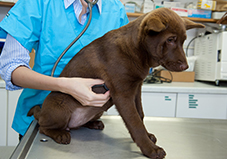
What should I do if I suspect my dog has tick fever?
If you find a tick on your dog and the tick is bloated, this means your dog has already been bitten by the tick. Remove the tick immediately. The safest and best solution is to bring your dog to the vet as soon as possible for a checkup. That being said, the tick that has bitten your dog may not be infected by blood parasites. As the incubation period of tick fever is between 5 to 14 days, observe your dog carefully for the next two weeks to see if your dog displays any symptoms of tick fever. If it does, take it to a vet immediately. The safest solution is to bring your dog to a veterinary clinic for a polymerase chain reaction test two weeks after it was bitten by a tick to see if it is infected with tick fever even though it hasn't displayed any symptoms of tick fever. Some dogs may harbour the disease for longer than years and remain subclinical and then become clinical at unpredictable time.
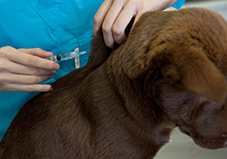
What is the treatment?
Treatment of tick fever varies according to the type of parasites involved. However, it generally involves antibiotics, atovaquone (an oral treatment), and increasing or decreasing the dose of corticosteroids depending on the situation. Severely anemic dogs may require blood transfusions.
The best treatment is prevention. Implement tick control measures on both the environment and the dog. For details, please click here.
What are some possible tick control measures?
Tick control measures must be implemented to treat both the environment and the dog.
Tick control measures in the environment
- Clean your home regularly. Use a flea and tick fogger if there is an indoor tick problem. Remember to read the instructions on the product carefully before use.
- Wash your dog's bed regularly.
- If you have a garden around your house, remove leaves, clear bushes and cut grass short in your garden.
- After spending time outdoors, check your trousers and shoes for ticks. If you spot a tick on your clothing, remove it right away.
- Remove your clothing and wash and dry it at high temperature.

Tick control measures on dogs
- Use tick preventive products on your dog. For details, please click here.
- Brush your dog thoroughly and check its body (especially its ears, chin, paws, limbs, axillary and inguinal areas and stomach) for ticks after it spends time outdoors.
- Avoid bringing your dog to grass and woods areas.
- If you spot a tick on your dog, remove it right away.
- Ask your vet to conduct a tick check on your dog every time you visit the vet.
- Consult your vet about suitable tick preventive products to use on your dogs.
- Discuss with your vet about tick-borne diseases in your area.
How to remove a tick?
To remove a tick from your dog or yourself correctly and safely, you may follow the steps below.
- Wear rubber gloves.
- Fill in a small jar with half cup of isopropyl rubbing alcohol. Make sure the alcohol is deep enough to submerge the tick.
- Use fine tipped tweezers to grab the tick as close to the skin as possible.
- Pull the tick gently backwards to remove it from the host's skin. Do not use too much pressure or a twisting gesture, otherwise you may inject more of the tick's saliva into the bloodstream of the host.
- Drop the tick into the jar of alcohol to kill it. Remove any additional ticks and drop them into the jar.
- Clean the site of the bite with a cotton swab soaked in alcohol. Then clean it with soap and water.
- Dispose of the dead ticks and used alcohol properly by flushing them down the toilet.
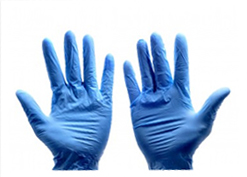
What are some common tick preventive products for dogs?
-
Topical insecticides
These are usually applied to a dog once per month to the back of the dog's neck. Some kill fleas and ticks while others just fleas, so check the information on the product carefully. -
Preventive tick collars
To ensure the collar is not too tight for your dog, check that you can get two fingers between the collar and the neck of your dog. Cut off any excess part of the collar after applying it on your dog so that it can't chew on the end. Read the information on the package to check the duration of effectiveness and its active ingredient such as Amitraz. Most dogs do not develop sensitivities. However, if you are worried, check on your dog to see if it has developed any irritation under the collar. If signs of irritation appear, you should contact a vet and explore other products. -
Flea and tick control sprays
These can come in aerosol cans or pump bottles. Make sure you spray all parts of your dog except around the eyes and ears of your dog. Spray a small amount on a cotton ball to apply the product around the eyes and ears of your dog. Do not get any of these products into the eyes of your dog. Follow your vet's and the manufacturer's instructions on how often to spray. Remember to spray in a well-ventilated place. -
Flea and tick powder
Dust powder over the entire body of your dog. Rub powder into hair and around the feet, pads and in between toes. Take care not to put the powder in the dog's eyes, nose or mouth. If your dog has asthma, do not use this product. Follow your vet's and the manufacturer's instructions on how often to dust. Remember to dust in a well-ventilated place. Consult a vet before using this product on weak, aged, pregnant or nursing dogs, or dogs on medication. -
Flea and tick shampoo
Wet your dog's coat thoroughly. Pour the dog shampoo into the cup of your hand and start working the shampoo in over the entire body of your dog beginning at the head and working backwards. Make sure that the shampoo is worked thoroughly into the coat down to the skin. Take care not to put the shampoo in the dog's eyes, nose or mouth. Leave the shampoo on your dog for some time according to the manufacturer's instructions, then rinse it completely and towel dry.
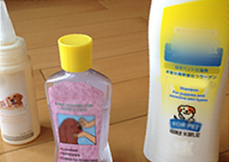
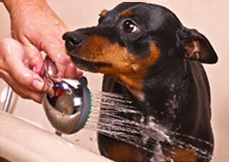
Points to note:
Remember to read entire label of any tick preventive products before each use and use only in accordance with label instructions.
Summary
Parasitic diseases are common in dogs and can have serious consequences – not only for animal health and welfare but also for public health. The vast majority of parasitic diseases of dogs are preventable and it is every dog owner’s duty to take the necessary steps to prevent disease in accordance with good practice. Formulate a preventive health programme for your dog in consultation with your vet – protect your pet, protect public health.